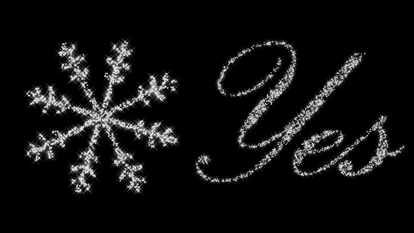

Constellation reconstructs images as starlike points of light. Imagine the constellation effect as an overlay of the original image, where each star takes its color from the image lying beneath. Constellation also detects the edges of objects in your images to better accentuate shapes in the effect. You can then choose to fill the areas between the stars with the original image, color or transparency.
Constellation also provides a wide range of kaleidoscopic textures and effects; we strongly recommend you experiment with this filter, starting with the presets, to discover all that it can do.
Constellation is typically used on entire images, but the filter also works great with selections and text.
Controls the size of the stars that make up your constellation. Higher settings yield larger stars.
Controls the irregularity of star sizes in the effect. Higher values produce more inconsistently sized stars.
Controls the number of stars placed around detected edges in your image. Higher values increase the frequency of edge stars. Use higher densities to accentuate the outline of a face, for example.

Top to Bottom: The effects of increasing edge star density.
Controls the number of stars placed throughout the image. Higher values place more stars.
Controls the brightness and saturation of the stars’ light and color. Higher values make the stars brighter and whiter.
Adds sparkling spires of light that radiate outward from the largest stars. The values are a percentage of the total. If you select 10, 10 percent of the largest stars will twinkle.
Specifies the angle of rotation at which the spires radiate from the stars. Enter a numeric value or click and drag the control knob to change the value.
The following three options determine how Constellation fills an area which has been filled with stars. In a background layer, you can fill with the original image or a solid color or the original image. In any other layer, you can fill with transparency, a solid color, or the original image.
Fill with solid color
Fills the areas between stars with the color chosen using the Fill Color picker.

Applying Constellation to photographs works great! This
example really shows off the advanced edge detection capabilities in Constellation.
Keep Original Image
Preserves the original image in areas beneath the stars and yields a sparkly overlay of the original image.
Make Selection Transparent
Fills areas between stars with transparency. Any underlying image layers will show through the transparency. This option is disabled when your image is in the background layer.
Controls the random element in the creation of this effect. Minor changes in the Random Seed setting can produce dramatic changes in your image; we encourage you to experiment with this control until you find the effects you like best. You can then precisely duplicate the effect by saving the Random Seed setting.
![]() Say
you have a picture of a rapper with gold teeth. By selecting just the teeth,
then choosing the Keep original image fill option, and applying
Constellation, you add the perfect “bling-bling” effect!
Say
you have a picture of a rapper with gold teeth. By selecting just the teeth,
then choosing the Keep original image fill option, and applying
Constellation, you add the perfect “bling-bling” effect!